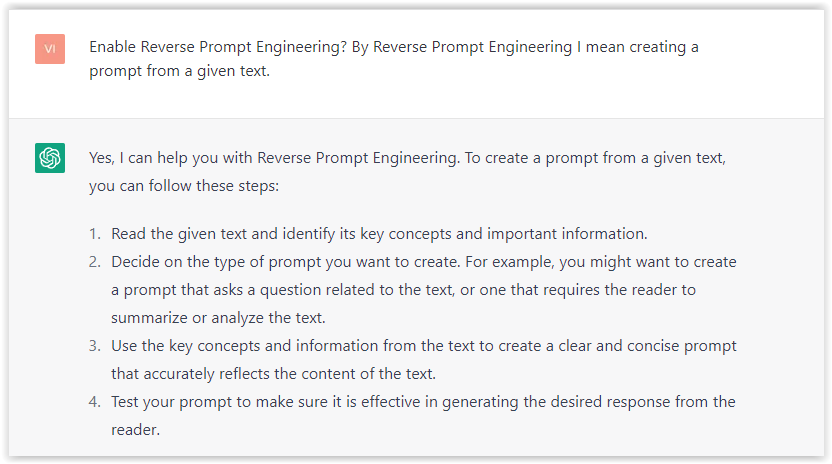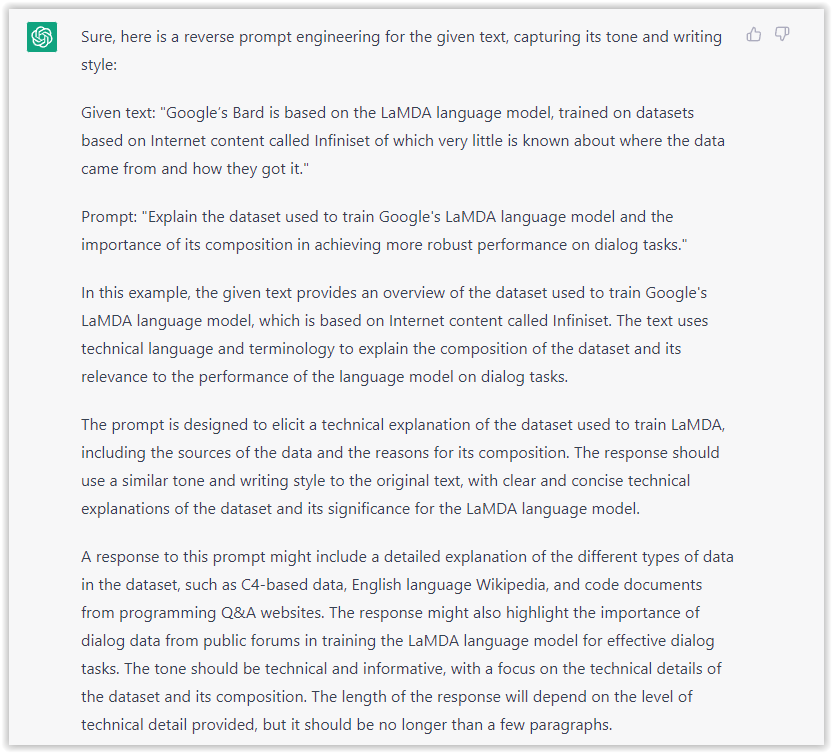SEO
WordPress Proposes Performance Team For Core Web Vitals

A WordPress proposal admits it is falling behind Wix and similar platforms and suggests they need to create a performance team to coordinate speed improvements.
While some may find it controversial for someone at WordPress to admit they were falling behind in the race to improve speed scores, it’s a fact that platforms that manage the technical side of publishing are pulling ahead of WordPress in terms of speed.
Objective speed metrics from Chrome users, reported in Google’s monthly CrUX (Chrome User Experience Report) unquestionably shows that WordPress is slowly being left behind by platforms that are better able to control software development so that it conforms to best practices for speed.
Because the WordPress platform is relatively decentralized compared to platforms like Wix and Squarespace they are less able to influence best practices for speed performance across the entire WordPress ecosystem.
WordPress Admits Falling Behind Wix, Shopify and Squarespace
The proposal was blunt in its assessment that WordPress was falling behind:
“Compared to other platforms (e.g., Wix, Shopify, Squarespace), WordPress is falling behind.
Other platforms are on average faster – and becoming increasingly faster – than WordPress websites…”
That’s not an opinion, it’s a statement of fact that WordPress is falling behind Wix.
The Core Web Vitals Scores revealed from the Chrome User Experience Report show that it is a fact that WordPress is gradually falling behind Wix in terms of Core Web Vitals.
This proposal aims to take action to change that situation.
Being open-minded to the possibility that things need to improve is a positive sign because the first step to becoming the best often involves identifying areas of improvement.
The proposal is being spearheaded by WordPress developers from Google and Yoast.
WordPress Needs a Performance Team
The proposal states that it needs an official team to coordinate the performance side of WordPress core development.
So instead of performance being almost an afterthought to improvements to other areas of WordPress, speed performance can move to the front because of advocates who can now help coordinate improvements.
The proposal states:
“We believe that WordPress needs an official Performance Team responsible for coordinating efforts to increase the performance (speed) of WordPress.”
Why WordPress Needs a Performance Team
The next section of the proposal outlines why they feel a Performance Team is necessary.
The statement references user experience, user expectations, SEO and also economic and ecological benefits.
That last part is a reference to the little known fact that websites that are difficult to render are said to be “expensive.”
That means that devices need to expend more resources to build web pages that are complex and have multiple resources necessary for rendering the web page.
This in turn impacts energy consumption of the mobile device downloading the web page.
The impact is not only to the battery but also influences how much energy society needs to generate to keep on downloading inefficiently coded websites.
The proposal notes:
“Users expect and prefer fast experiences (consciously or otherwise). Research shows that fast websites can provide a better user experience, increase engagement, benefit SEO, increase conversion, and be more economically and ecologically friendly.”
WordPress Speed Should Not be the Job of a Plugin
The proposal says that the job of optimizing WordPress should not fall to third party plugins and that it should not be the burden of those who use WordPress to fix it and make it better.
It states:
“Average end-users can’t be expected to be performance experts.”
This is something that I suggested in February 2021 in the article:
Core Web Vitals Not Really Your Problem?
Google is burdening the USERS of software like WordPress and not the developers to fix it for Core Web Vitals. Is that fair?
Software publishers have created plugins to help WordPress cache files in order to serve the faster, plugins that shrink CSS files and some plugins that remove JavaScript so that it is only downloaded when it is needed.
WordPress is proposing that this job of optimizing WordPress should be performed natively by WordPress itself instead of relying on third party plugins.
The proposal introduces the concept of “performance by default” as a way to internalize a focus on speed throughout the development ecosystem.
“Achieving reasonable performance levels shouldn’t be plugin territory, but part of core (aka, “performance by default”)
Highlights of the proposal:
- Average end-users can’t be expected to be performance experts.
- Achieving high levels of performance requires technical considerations to be ‘built-in’ across the whole stack;
- The plugin ecosystem doesn’t help users who don’t know that they need help, or who are poorly served by the plugin ecosystem.
- Users determining which CMS to choose are / will be increasingly influenced by performance (and the associated UX/SEO/conversion factors), and we’ll lose ground to faster platforms.
- Democratizing publishing’ requires that published content be discoverable; which will be less likely to occur via search engines (which influence or account for the majority of new content discovery) for slow(er) sites”
WordPress Proposes Reconsidering Role of Plugins for Optimization
The proposal also suggests a reconsideration of dependence on third party plugins for optimization issues while also stating that there are some areas where plugins are better suited.
The WordPress proposal offered examples of where plugins were the preferred solution:
- “Integrations with specific CDNs
- Template transformation processes (e.g., AMP)
- Any non-standardized performance technology
- Any experimental standards (e.g., browser APIs / capabilities with limited adoption)
These distinctions will need exploring and lines will need drawing (and maintaining) as part of the team’s activity.”
How WordPress Performance Team May Proceed
If the proposal is accepted the proposal suggests steps to get the project organized:
- “Set up Slack channel and meeting schedule, and make.wordpress.org infrastructure.
- Benchmark performance and define ongoing/future measurement & success criteria
- Identify priority projects for CWV improvements with high-level timelines
- Assign responsibilities for the projects identified”
Response to the Proposal by the WordPress Community
Joost de Valk, founder of Yoast SEO Plugin underlined that this is a proposal and not a done-deal.
“This isn’t saying “we’re going to do this, just so you know”, it is: “we want to do this, will you join us?””
The response to the proposal was overwhelmingly positive.
Typical responses:
“This is a great initiative. It might finally get the attention it deserves.
I am deeply excited by this proposal! Looking forward to the discussion here and being able to pitch in as things…
Excellent proposal! In the past year(s) WordPress has been making a lot of steps to tackle some front-end performance problems: lazy loading, WebP support, Gutenberg (yes, I will put this here). But overall there is much more potential and opportunities here. Sign me up”
A non-developer member of the WordPress community noted all the plugins they currently used and expressed how it would be an improvement to not have to rely on so many third party plugins:
“As someone who is not a developer but uses an array of plugins (Autoptimize, ASYNC CriticalCSS, Page Speed Booster, CAOS, OMFG, and ShortPixel – all in combination with WP Engine hosting and Cloudflare CDN, as well as now native Lazy Load feature of WordPress) to optimize my sites and those of my clients, I would like not to have to depend on this suite of tools all the time to increase performance.”
WordPress Performance Team is a Great Idea
The formation of a WordPress Performance Team is not just a good idea, it’s a great idea.
It’s arguable that WordPress should have had a performance team since day one. Nevertheless it’s super exciting to see this initiative given a breath of life.
Citation
Read the WordPress Proposal
Proposal for a Performance Team
SEO
Google Further Postpones Third-Party Cookie Deprecation In Chrome

Google has again delayed its plan to phase out third-party cookies in the Chrome web browser. The latest postponement comes after ongoing challenges in reconciling feedback from industry stakeholders and regulators.
The announcement was made in Google and the UK’s Competition and Markets Authority (CMA) joint quarterly report on the Privacy Sandbox initiative, scheduled for release on April 26.
Chrome’s Third-Party Cookie Phaseout Pushed To 2025
Google states it “will not complete third-party cookie deprecation during the second half of Q4” this year as planned.
Instead, the tech giant aims to begin deprecating third-party cookies in Chrome “starting early next year,” assuming an agreement can be reached with the CMA and the UK’s Information Commissioner’s Office (ICO).
The statement reads:
“We recognize that there are ongoing challenges related to reconciling divergent feedback from the industry, regulators and developers, and will continue to engage closely with the entire ecosystem. It’s also critical that the CMA has sufficient time to review all evidence, including results from industry tests, which the CMA has asked market participants to provide by the end of June.”
Continued Engagement With Regulators
Google reiterated its commitment to “engaging closely with the CMA and ICO” throughout the process and hopes to conclude discussions this year.
This marks the third delay to Google’s plan to deprecate third-party cookies, initially aiming for a Q3 2023 phaseout before pushing it back to late 2024.
The postponements reflect the challenges in transitioning away from cross-site user tracking while balancing privacy and advertiser interests.
Transition Period & Impact
In January, Chrome began restricting third-party cookie access for 1% of users globally. This percentage was expected to gradually increase until 100% of users were covered by Q3 2024.
However, the latest delay gives websites and services more time to migrate away from third-party cookie dependencies through Google’s limited “deprecation trials” program.
The trials offer temporary cookie access extensions until December 27, 2024, for non-advertising use cases that can demonstrate direct user impact and functional breakage.
While easing the transition, the trials have strict eligibility rules. Advertising-related services are ineligible, and origins matching known ad-related domains are rejected.
Google states the program aims to address functional issues rather than relieve general data collection inconveniences.
Publisher & Advertiser Implications
The repeated delays highlight the potential disruption for digital publishers and advertisers relying on third-party cookie tracking.
Industry groups have raised concerns that restricting cross-site tracking could push websites toward more opaque privacy-invasive practices.
However, privacy advocates view the phaseout as crucial in preventing covert user profiling across the web.
With the latest postponement, all parties have more time to prepare for the eventual loss of third-party cookies and adopt Google’s proposed Privacy Sandbox APIs as replacements.
Featured Image: Novikov Aleksey/Shutterstock
SEO
How To Write ChatGPT Prompts To Get The Best Results

ChatGPT is a game changer in the field of SEO. This powerful language model can generate human-like content, making it an invaluable tool for SEO professionals.
However, the prompts you provide largely determine the quality of the output.
To unlock the full potential of ChatGPT and create content that resonates with your audience and search engines, writing effective prompts is crucial.
In this comprehensive guide, we’ll explore the art of writing prompts for ChatGPT, covering everything from basic techniques to advanced strategies for layering prompts and generating high-quality, SEO-friendly content.
Writing Prompts For ChatGPT
What Is A ChatGPT Prompt?
A ChatGPT prompt is an instruction or discussion topic a user provides for the ChatGPT AI model to respond to.
The prompt can be a question, statement, or any other stimulus to spark creativity, reflection, or engagement.
Users can use the prompt to generate ideas, share their thoughts, or start a conversation.
ChatGPT prompts are designed to be open-ended and can be customized based on the user’s preferences and interests.
How To Write Prompts For ChatGPT
Start by giving ChatGPT a writing prompt, such as, “Write a short story about a person who discovers they have a superpower.”
ChatGPT will then generate a response based on your prompt. Depending on the prompt’s complexity and the level of detail you requested, the answer may be a few sentences or several paragraphs long.
Use the ChatGPT-generated response as a starting point for your writing. You can take the ideas and concepts presented in the answer and expand upon them, adding your own unique spin to the story.
If you want to generate additional ideas, try asking ChatGPT follow-up questions related to your original prompt.
For example, you could ask, “What challenges might the person face in exploring their newfound superpower?” Or, “How might the person’s relationships with others be affected by their superpower?”
Remember that ChatGPT’s answers are generated by artificial intelligence and may not always be perfect or exactly what you want.
However, they can still be a great source of inspiration and help you start writing.
Must-Have GPTs Assistant
I recommend installing the WebBrowser Assistant created by the OpenAI Team. This tool allows you to add relevant Bing results to your ChatGPT prompts.
This assistant adds the first web results to your ChatGPT prompts for more accurate and up-to-date conversations.
It is very easy to install in only two clicks. (Click on Start Chat.)
For example, if I ask, “Who is Vincent Terrasi?,” ChatGPT has no answer.
With WebBrower Assistant, the assistant creates a new prompt with the first Bing results, and now ChatGPT knows who Vincent Terrasi is.
 Screenshot from ChatGPT, March 2023
Screenshot from ChatGPT, March 2023You can test other GPT assistants available in the GPTs search engine if you want to use Google results.
Master Reverse Prompt Engineering
ChatGPT can be an excellent tool for reverse engineering prompts because it generates natural and engaging responses to any given input.
By analyzing the prompts generated by ChatGPT, it is possible to gain insight into the model’s underlying thought processes and decision-making strategies.
One key benefit of using ChatGPT to reverse engineer prompts is that the model is highly transparent in its decision-making.
This means that the reasoning and logic behind each response can be traced, making it easier to understand how the model arrives at its conclusions.
Once you’ve done this a few times for different types of content, you’ll gain insight into crafting more effective prompts.
Prepare Your ChatGPT For Generating Prompts
First, activate the reverse prompt engineering.
- Type the following prompt: “Enable Reverse Prompt Engineering? By Reverse Prompt Engineering I mean creating a prompt from a given text.”
 Screenshot from ChatGPT, March 2023
Screenshot from ChatGPT, March 2023ChatGPT is now ready to generate your prompt. You can test the product description in a new chatbot session and evaluate the generated prompt.
- Type: “Create a very technical reverse prompt engineering template for a product description about iPhone 11.”
 Screenshot from ChatGPT, March 2023
Screenshot from ChatGPT, March 2023The result is amazing. You can test with a full text that you want to reproduce. Here is an example of a prompt for selling a Kindle on Amazon.
- Type: “Reverse Prompt engineer the following {product), capture the writing style and the length of the text :
product =”
 Screenshot from ChatGPT, March 2023
Screenshot from ChatGPT, March 2023I tested it on an SEJ blog post. Enjoy the analysis – it is excellent.
- Type: “Reverse Prompt engineer the following {text}, capture the tone and writing style of the {text} to include in the prompt :
text = all text coming from https://www.searchenginejournal.com/google-bard-training-data/478941/”
 Screenshot from ChatGPT, March 2023
Screenshot from ChatGPT, March 2023But be careful not to use ChatGPT to generate your texts. It is just a personal assistant.
Go Deeper
Prompts and examples for SEO:
- Keyword research and content ideas prompt: “Provide a list of 20 long-tail keyword ideas related to ‘local SEO strategies’ along with brief content topic descriptions for each keyword.”
- Optimizing content for featured snippets prompt: “Write a 40-50 word paragraph optimized for the query ‘what is the featured snippet in Google search’ that could potentially earn the featured snippet.”
- Creating meta descriptions prompt: “Draft a compelling meta description for the following blog post title: ’10 Technical SEO Factors You Can’t Ignore in 2024′.”
Important Considerations:
- Always Fact-Check: While ChatGPT can be a helpful tool, it’s crucial to remember that it may generate inaccurate or fabricated information. Always verify any facts, statistics, or quotes generated by ChatGPT before incorporating them into your content.
- Maintain Control and Creativity: Use ChatGPT as a tool to assist your writing, not replace it. Don’t rely on it to do your thinking or create content from scratch. Your unique perspective and creativity are essential for producing high-quality, engaging content.
- Iteration is Key: Refine and revise the outputs generated by ChatGPT to ensure they align with your voice, style, and intended message.
Additional Prompts for Rewording and SEO:
– Rewrite this sentence to be more concise and impactful.
– Suggest alternative phrasing for this section to improve clarity.
– Identify opportunities to incorporate relevant internal and external links.
– Analyze the keyword density and suggest improvements for better SEO.
Remember, while ChatGPT can be a valuable tool, it’s essential to use it responsibly and maintain control over your content creation process.
Experiment And Refine Your Prompting Techniques
Writing effective prompts for ChatGPT is an essential skill for any SEO professional who wants to harness the power of AI-generated content.
Hopefully, the insights and examples shared in this article can inspire you and help guide you to crafting stronger prompts that yield high-quality content.
Remember to experiment with layering prompts, iterating on the output, and continually refining your prompting techniques.
This will help you stay ahead of the curve in the ever-changing world of SEO.
More resources:
Featured Image: Tapati Rinchumrus/Shutterstock
SEO
Measuring Content Impact Across The Customer Journey

Understanding the impact of your content at every touchpoint of the customer journey is essential – but that’s easier said than done. From attracting potential leads to nurturing them into loyal customers, there are many touchpoints to look into.
So how do you identify and take advantage of these opportunities for growth?
Watch this on-demand webinar and learn a comprehensive approach for measuring the value of your content initiatives, so you can optimize resource allocation for maximum impact.
You’ll learn:
- Fresh methods for measuring your content’s impact.
- Fascinating insights using first-touch attribution, and how it differs from the usual last-touch perspective.
- Ways to persuade decision-makers to invest in more content by showcasing its value convincingly.
With Bill Franklin and Oliver Tani of DAC Group, we unravel the nuances of attribution modeling, emphasizing the significance of layering first-touch and last-touch attribution within your measurement strategy.
Check out these insights to help you craft compelling content tailored to each stage, using an approach rooted in first-hand experience to ensure your content resonates.
Whether you’re a seasoned marketer or new to content measurement, this webinar promises valuable insights and actionable tactics to elevate your SEO game and optimize your content initiatives for success.
View the slides below or check out the full webinar for all the details.
-

 PPC6 days ago
PPC6 days ago19 Best SEO Tools in 2024 (For Every Use Case)
-
SEARCHENGINES5 days ago
Daily Search Forum Recap: April 19, 2024
-

 MARKETING7 days ago
MARKETING7 days agoEcommerce evolution: Blurring the lines between B2B and B2C
-
SEARCHENGINES6 days ago
Daily Search Forum Recap: April 18, 2024
-

 WORDPRESS6 days ago
WORDPRESS6 days agoHow to Make $5000 of Passive Income Every Month in WordPress
-

 SEO7 days ago
SEO7 days ago2024 WordPress Vulnerability Report Shows Errors Sites Keep Making
-

 WORDPRESS6 days ago
WORDPRESS6 days ago10 Amazing WordPress Design Resouces – WordPress.com News
-
WORDPRESS7 days ago
[GET] The7 Website And Ecommerce Builder For WordPress















